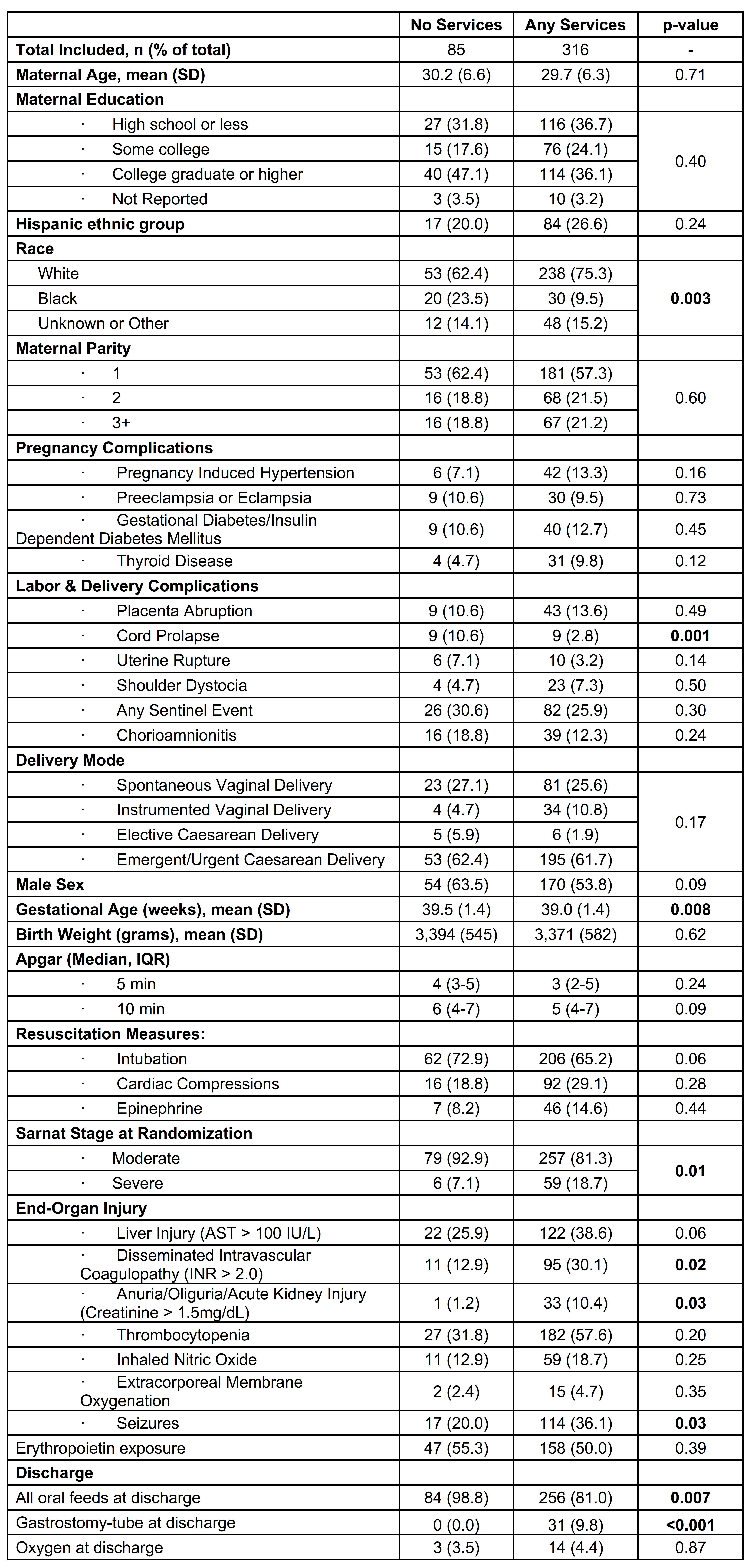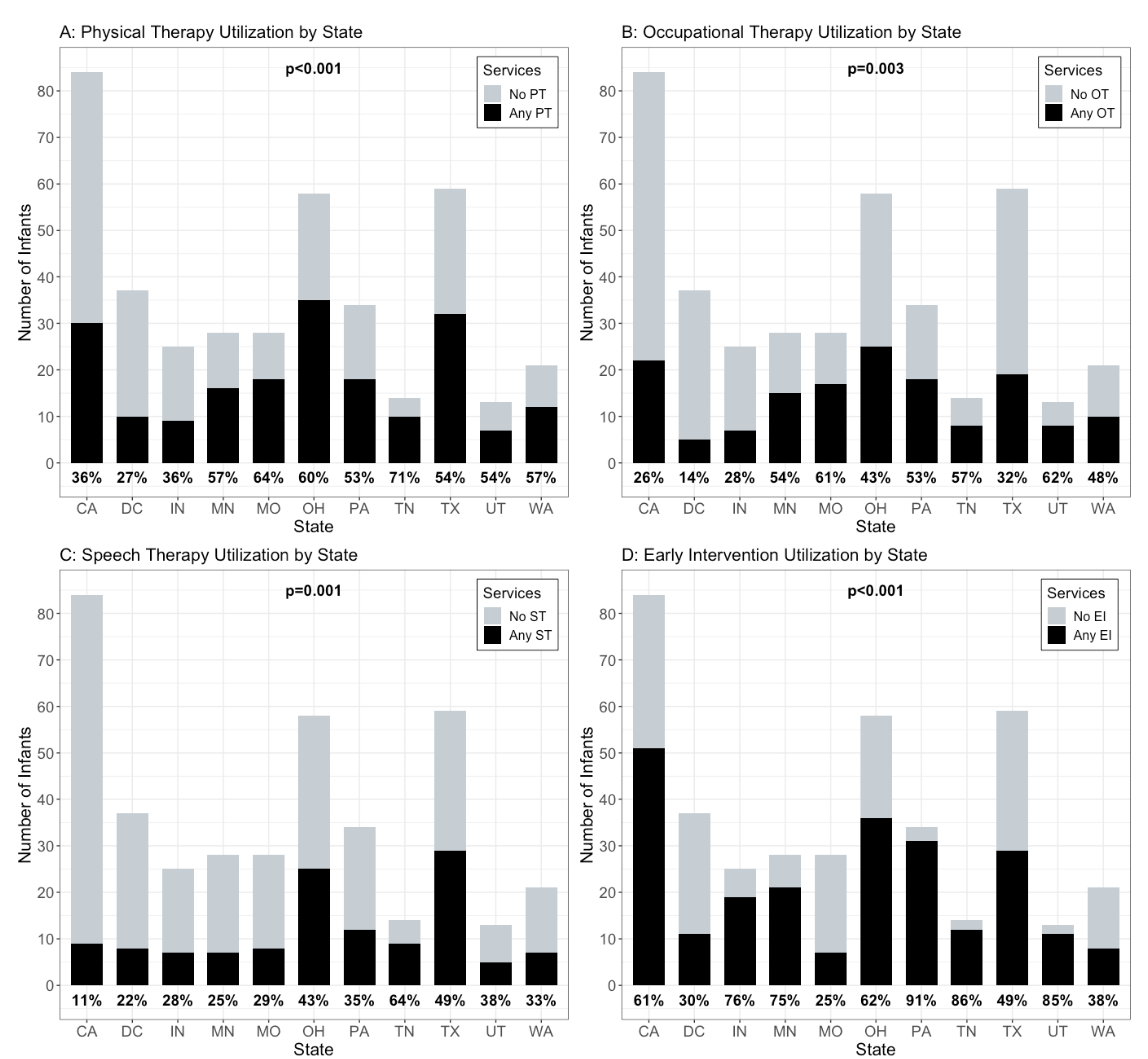Neonatology
Session: Neonatal Neurology 3: Clinical
40 - Clinical and Demographic Factors Associated with the Utilization of Therapy Services in the First Two Years After Hospital Discharge Among Infants with Moderate – Severe HIE
Friday, May 3, 2024
5:15 PM - 7:15 PM ET
Poster Number: 40
Publication Number: 40.16
Publication Number: 40.16

Kaashif A. Ahmad, MD (he/him/his)
National Research Director of Neonatal Clinical Trials
Pediatrix Medical Group
Houston, Texas, United States
Presenting Author(s)
Background: Infants with moderate or severe hypoxic-ischemic encephalopathy (HIE) are at high risk for long-term neurodevelopmental impairment. After hospital discharge, utilization of occupational, speech, and physical therapy (therapy services) and early childhood intervention (EI) may improve long-term outcomes. Little data exists regarding utilization of these services after discharge in this population.
Objective: In a cohort of patients with moderate or severe HIE, we sought to describe the utilization patterns of therapy services and EI in the first two years of life. We also sought to determine demographic and clinical factors associated with service utilization.
Design/Methods: The HEAL Trial tested erythropoietin plus therapeutic hypothermia for neuroprotection in patients with moderate or severe HIE. Participants received follow-up telephone calls at 4, 8, 12, and 18-months with an in-person interview at 24-months of age. At each contact, parents were asked if their child had received therapy services or EI. Adjusted odds ratios (aORs) with 95% CI for therapy utilization were determined using logistic regression with robust standard errors adjusting for potentially confounding infant and demographic factors.
Results: Of 501 enrolled patients, 65 (13%) died during the study period. Of 436 surviving patients, at least one response regarding therapy utilization was available for 401 (92%). Overall, 316 (79%) surviving patients received at least one therapy service on one occasion. Those receiving any services had significantly higher rates of maternal white race and Hispanic ethnicity, severe Sarnat staging at randomization, indicators of end organ injury, and use of gastrostomy tubes at discharge (Table 1). Maternal black race was significantly associated with lower use of any services than no services. We found significant variations in the use of therapy services as well as early childhood intervention utilization by state (Figure 1). Maternal and patient characteristics impacting use of each therapy service are depicted in Figure 2 with severe encephalopathy, presence of seizures, severe NDI, and discharge with gastrostomy tube commonly associated with utilization of specific therapies.
Conclusion(s): Severe HIE at randomization, end organ injury, and gastrostomy tube at discharge were associated with increased utilization of services and maternal black race associated with lower service utilization. Further investigation is needed to learn about the barriers that limit access to therapy services and how utilization of services impacts long term neurodevelopmental outcomes

.jpg)

